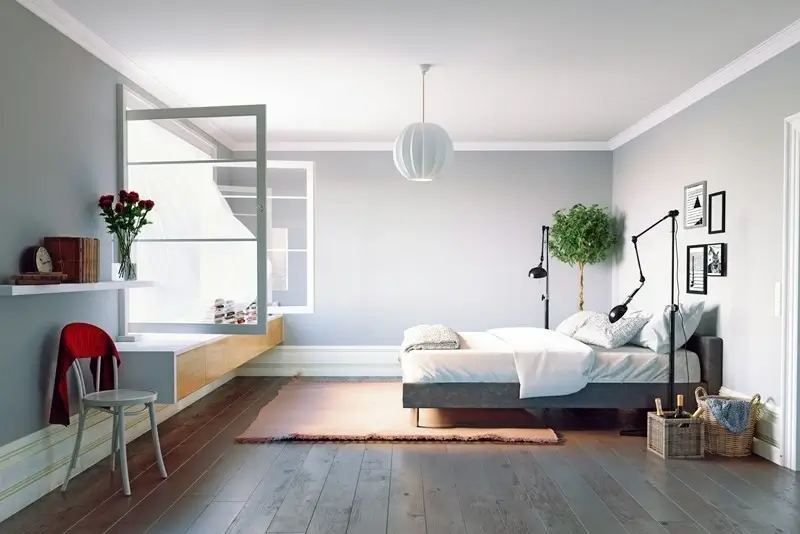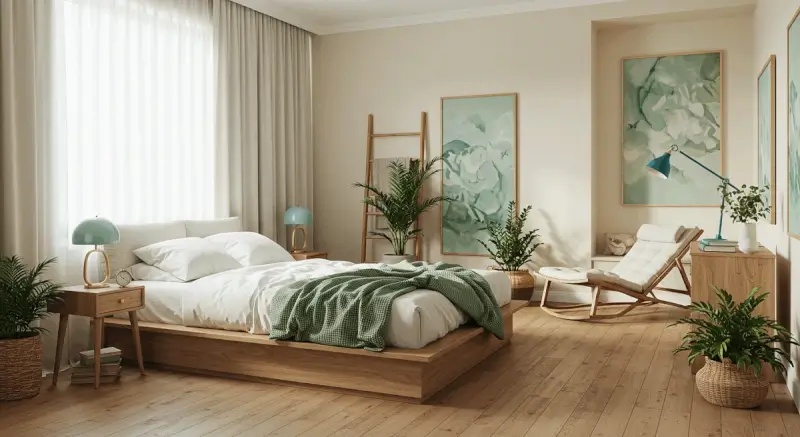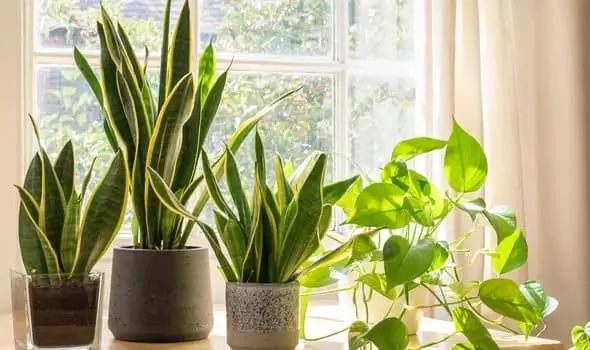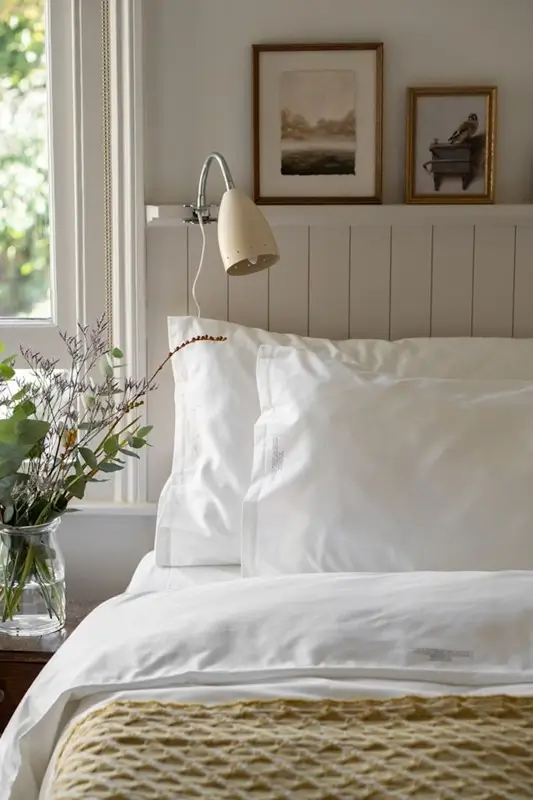Here's something that might surprise you: people living near greenery — including gardens and tree-lined streets — are 92% more likely to sleep well.
Your bedroom should be your own personal sanctuary, just like nature intended. The biophilic design bedroom isn't just another decorating trend you'll forget about next year; it's a science-backed approach to creating sleep spaces that actually work with your body's natural rhythms.
The spaces where you rest your head have a profound impact on your mental, physical, and emotional wellbeing, and your bedroom deserves the same attention you'd give to any other important aspect of your health.
Struggling with restless nights or simply want to create a more peaceful retreat? Biophilic interior design offers practical solutions that really work.
How to Calm Your Spaces with Nature Bedroom Decor

Adding elements from nature into your bedroom can help slash stress levels, give your immune system a boost, and even help lower your blood pressure.
What's more, exposure to natural environments—or even just views of nature—can reduce pain, speed up healing, and improve your overall wellbeing.
Think about it: the gentle warmth of morning sunlight streaming through your window, the quiet presence of leafy green plants purifying your air while you sleep. These natural elements are directly connected to reducing your stress levels, lifting your mood, and supporting your physical health.
Better air quality improves your overall health, and nowhere is this more crucial than in your bedroom for a truly restful night's sleep.
Don't worry—creating your own biophilic bedroom doesn't mean gutting your entire space or spending a fortune. From making the most of natural light to choosing the right plants and materials, you'll discover how to create a sleep space that works with nature, not against it.
What is Biophilic Bedroom Design and Why It Matters

Biophilia, meaning “love of living things,” represents our innate biological connection with nature.
Psychoanalyst Erich Fromm coined this concept in the 1960s, and biologist Edward O. Wilson developed it further in the 1980s, suggesting that humans possess a genetic basis for connecting with the natural world.
Understanding biophilic interior design
Biophilic design takes our evolutionary relationship with nature and brings it straight into your home.
This approach goes far beyond simply looking pretty—it's rooted in how your body and mind actually respond to natural elements.
Biophilic interior design creates spaces that foster meaningful connections with nature through three main categories: direct nature experiences, natural analogues (representations), and spatial configurations that mimic nature.
Your biophilic design bedroom might feature living plants, natural materials, earthy color palettes, organic shapes, and clever lighting that mimics the patterns you'd find outdoors.

How nature supports better sleep
The connection between nature and sleep quality runs deeper than you might expect.
Research shows that exposure to natural elements can help regulate your circadian rhythms, which control your sleep-wake cycles. Natural light plays a crucial role here, synchronizing your internal clock for more restful nights.
What's more, studies reveal that spaces with wooden elements help lower heart rate and stress levels compared to rooms filled with synthetic materials.
Since quality sleep impacts your mental, cardiovascular, neurological and immune functions, creating a biophilic interior design bedroom becomes particularly important.
The science behind natural connection
The scientific evidence supporting biophilic design is impressive.
Research demonstrates that exposure to natural environments provides greater emotional restoration, with lower instances of tension, anxiety, anger, fatigue, confusion and total mood disturbance than urban environments with limited natural characteristics.
Studies have found that biophilic indoor environments consistently produce better recovery responses after stressors, with the largest impacts occurring within the first four minutes of exposure.
Even more compelling, biophilic elements like timber have been found to reduce blood pressure and lower stress levels, whilst plants release negative ions that trigger serotonin, ultimately relieving stress and anxiety.
Start with light, air, and views
Creating your biophilic bedroom begins with the most fundamental elements of natural design. Think of light, air, and visual connections to nature as the foundation of your sleep sanctuary.
Make the most of natural light

Natural light significantly affects your sleep-wake cycle. Research shows that morning light exposure resets your circadian rhythm, helping you feel more alert and energized during the day while improving sleep quality at night.
Position your bed where you can benefit from natural light without being overwhelmed by it. South-facing bedrooms? Consider using thermal blinds or curtains to regulate temperature, as they protect against both heat loss in winter and heat gain in summer.
Want to amplify the natural light you already have? Place mirrors opposite windows—an age-old trick that doubles illumination while creating an airy atmosphere. Keep your windows spotlessly clean, as dirt can block precious sunlight. Choose light-coloured walls and ceilings that reflect rather than absorb brightness.
Quick tip: For darker spaces, consider installing skylights or clerestory windows to introduce daylight without sacrificing privacy.
Improve your bedroom's air quality
The air quality in your bedroom directly impacts sleep quality. Indoor air can be up to five times more polluted than outdoor air, affecting your respiratory health and sleep patterns.
Open your windows regularly to create cross-ventilation, which efficiently removes stale air and pollutants that accumulate overnight.
For consistent air quality, consider installing a ventilation system with heat recovery, which maintains temperature whilst continuously refreshing your bedroom air.
Room-specific air purifiers with HEPA filters can trap 99.95% of ultrafine particles, including dust mites and allergens, creating cleaner air whilst you sleep.
Position your bed for the perfect view
Waking up to natural views reduces stress and improves mental wellbeing.
When positioning your bed, prioritize clear sight lines to windows without obstruction. However, avoid placing your bed directly against windows, as this makes it vulnerable to temperature fluctuations and compromises privacy.
Can't see greenery from your bedroom window? Nature-inspired wall art offers a practical alternative.
Natural images bring tranquility to any room and can have restorative effects on your mental state.
Consider photographs, paintings or illustrations that capture landscapes, forests, or water scenes—elements that evoke peaceful natural environments and support your biophilic bedroom goals.
Add plants and natural materials
Plants and natural materials form the heart of any biophilic bedroom design.
These living elements connect you directly to nature, creating an environment that supports restorative sleep through improved air quality and reduced stress.
Best plants for sleep and air purification
Snake plants stand out as bedroom champions because they convert carbon dioxide into oxygen at night—unlike most plants that only do this during daylight.
Peace lilies earned their place on NASA's top air-purifying list by removing formaldehyde, benzene and ammonia.
Spider plants join this night-time oxygen club whilst filtering household pollutants. Meanwhile, aloe vera releases oxygen overnight and breaks down harmful VOCs.
Where to place plants for maximum benefit
Position oxygen-producing plants like snake plants or aloe vera near your bed to maximize night-time benefits.
Windowsills work brilliantly for plants needing bright, indirect light, whilst shade-loving options like peace lilies prefer east or west-facing windows. Short on space? Consider hanging plants or wall-mounted planters.

Quick tip: Start with just one or two plants to see how you get on, you can always add more once you've got the hang of caring for them.
Choose breathable bedding and wooden furniture
Linen bedding can absorb up to 20% of its weight in moisture without feeling damp against your skin.
Solid wood furniture naturally reduces stress levels—studies show rooms with wooden elements help lower heart rate compared to spaces filled with synthetic materials.
Avoid synthetic materials that trap heat

Microfiber bedding, despite being soft and inexpensive, traps heat and moisture because it's made from synthetic fibers.
Likewise, polyester is made from plastic and is therefore not responsive to people's changing temperatures. These materials create barriers between you and restorative sleep.
Create the perfect sensory environment
Now you've sorted your lighting and chosen your plants, it's time to complete your sleep sanctuary with colours, sounds, and scents that truly connect you to nature.
Which colors will help you sleep better?
The colors you choose for your biophilic bedroom can make a profound difference to how quickly you drift off and how rested you feel when you wake up.
Rich brown paint colors evoke earthy hues found in nature and truly envelop a room, allowing you to relax and recharge.
Green is perfect for serene bedrooms because of its calming effect and connection with nature.
Here's a tip worth remembering: tonal colour variations help the eye gently move across subtle differences without being drawn to one specific point, creating a more relaxing environment than energizing contrasting pops.
Think soft sage greens, warm terracotta, or gentle sandy beiges—colors that remind you of peaceful outdoor spaces.

Bring nature's soundtrack indoors
Why not add some natural sounds to complete your sleep sanctuary?
Soundscapes including recordings of rainforests, ocean waves or rainfall mimic the calming sounds of nature. These rhythmic, predictable sounds soothe the brain and mask distracting environmental noises.
Research shows that ocean sounds specifically improved participants' sleep quality, including depth, awakening, and return to sleep.
Popular nature sounds for encouraging sleep include ocean, rain, cricket, thunder, forest, wave, bird, wind, rainforest and snow sounds. You can find these through sleep apps or white noise machines—perfect for city dwellers who miss the sounds of the countryside.
Essential scents for deeper rest
Ready to add the finishing touch to your natural bedroom?
Essential oils can work wonders for creating that spa-like atmosphere you're after. Lavender is thoroughly researched for improving sleep quality, with studies showing it lowers heart rate and blood pressure whilst increasing slow-wave sleep.
Cedarwood oil contains cedrol, which has sedative effects that improve sleep quality. Chamomile promotes relaxation through compounds like apigenin that interact with brain receptors to reduce tension.
For your complete biophilic bedroom experience, try incorporating these scents through diffusers, pillow sprays, or scented sachets. Just a few drops before bedtime can make all the difference to how peacefully you sleep.
Your biophilic bedroom transformation starts today

The evidence speaks for itself: biophilic bedroom design has a real impact on sleep quality and your overall wellbeing. Natural elements within your sleeping space work hand-in-hand with your body's rhythms, helping to reduce stress and boost your health outcomes.
Ready to create your own natural sleep sanctuary? Here's what matters most:
- Light and air come first. Maximise natural light to keep your circadian rhythm on track, whilst fresh air through proper ventilation creates the perfect breathing environment for restful nights.
- Choose your green companions wisely. Oxygen-producing plants don't just purify your air—they create that psychological connection to the natural world that your mind craves.
- Materials make the difference. Solid wood furniture and breathable fabrics like linen will create a healthier sleep environment than any synthetic alternative. Add earth-toned colours, gentle nature sounds, and calming scents to complete the sensory experience your body needs to truly unwind.
What's brilliant about biophilic design? You don't need to gut your entire bedroom or break the bank.
Start small—add a snake plant, swap your synthetic sheets for linen, or hang some nature-inspired artwork. These simple changes can dramatically improve your sleep space.
Your ancestors slept surrounded by nature for thousands of years. Perhaps the secret to better modern sleep is simpler than you think: bring a little bit of that natural world back into your bedroom.
Don't forget, you can rest easy knowing that every natural element you add is working to improve your sleep quality. Sweet dreams await.
Disclaimer:
This post may contain affiliate links. I receive a small commission at no cost to you when you make a purchase using my link.








